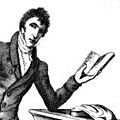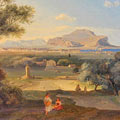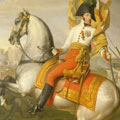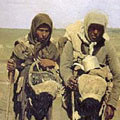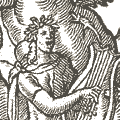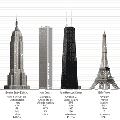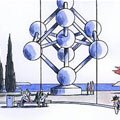Voor de beeldende kunst van Oekraïne zijn de 19de en de vroeg 20ste eeuw van groot belang geweest. Deze „Gouden Eeuw van de Oekraïne„ heeft bekende kunstenaars voortgebracht, die enorm productief waren en in een grote diversiteit aan stijlen werkten. Net als in de andere Europese landen wordt deze periode gekenmerkt door grote sociale en politieke veranderingen en vooruitgang op wetenschappelijk en technisch gebied. Niet voor niets zien we die grote veranderingen dan ook terug in de kunst van de 19de en begin 20ste eeuw. In de tentoonstelling is bovendien het groeiende nationalisme van de 19de eeuw goed te volgen.
Taras Shevchenko, born 9 March 1814 in Moryntsi (Kiev gubernia), died 10 March 1861 in St Petersburg, (Russia). Artist, poet, and national bard of Ukraine. Born a serf, Shevchenko was orphaned in his early teens and grew up in poverty and misery. He was taught to read by the village precentor and was often beaten for `wasting time’ on drawing, for which he had an innate talent. At the age of 14 he was taken by his owner, P. Engelhardt, to serve as houseboy, and traveled extensively with him, first to Vilnius (1828-31) and then to St Petersburg. Engelhardt noticed Shevchenko’s artistic talent and apprenticed him to the painter V. Shiriaev for four years. During that period Shevchenko spent his free time sketching the statues in the imperial summer gardens. There he met the Ukrainian artist I. Soshenko, who introduced him to other compatriots in St Petersburg, Ye. Hrebinka, V. Hryhorovych, and O. Venetsianov. Through them he met the Russian painter K. Briullov, whose portrait of the Russian poet V. Zhukovsky was disposed of in a lottery, the proceeds of which were used to buy Shevchenko’s freedom from Engelhardt on 22 April (os, 5 May ns) 1838.
Bron: ualberta.ca/CIUS/eu/articles/art-shevch.htm
Bron: nieuwekerk.nl/

oekraine.org | artukraine.com
Articles, Reviews & Essays on Ukrainian Art
 Bat Ye„or, born in Cairo, became a stateless refugee in 1957 and a British citizen by marriage in 1959, before settling in Switzerland. She became the pioneer researcher on „dhimmitude„ – the inferior status of subjected non-Muslims. She has been described by Sir Martin Gilbert in the third volume of his History of the 20th Century as “the acknowledged expert on the plight of Jews and Christians in Muslim lands“.
Bat Ye„or, born in Cairo, became a stateless refugee in 1957 and a British citizen by marriage in 1959, before settling in Switzerland. She became the pioneer researcher on „dhimmitude„ – the inferior status of subjected non-Muslims. She has been described by Sir Martin Gilbert in the third volume of his History of the 20th Century as “the acknowledged expert on the plight of Jews and Christians in Muslim lands“.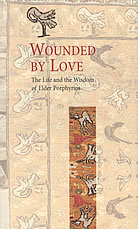 The same is not true if we say with a sense of awe that another person is not living well and that we should pray for God to help him and grant him repentance; that is, neither do we say, nor deep down do we desire that God will punish him for what he does. In this case not only do we not do harm to our neighbour, but we do him good. When someone prays for his neighbour, a good force proceeds from him and heals, strengthens and revives him. It is a mystery how this force leaves us. But, in truth, the person who has good within him radiates this good power to others, mystically and gently. He sends light to his neighbour and this creates a shield around him and protects him from evil. When we possess a good disposition towards others and pray, then we heal our fellows and we help them progress towards God.
The same is not true if we say with a sense of awe that another person is not living well and that we should pray for God to help him and grant him repentance; that is, neither do we say, nor deep down do we desire that God will punish him for what he does. In this case not only do we not do harm to our neighbour, but we do him good. When someone prays for his neighbour, a good force proceeds from him and heals, strengthens and revives him. It is a mystery how this force leaves us. But, in truth, the person who has good within him radiates this good power to others, mystically and gently. He sends light to his neighbour and this creates a shield around him and protects him from evil. When we possess a good disposition towards others and pray, then we heal our fellows and we help them progress towards God.
